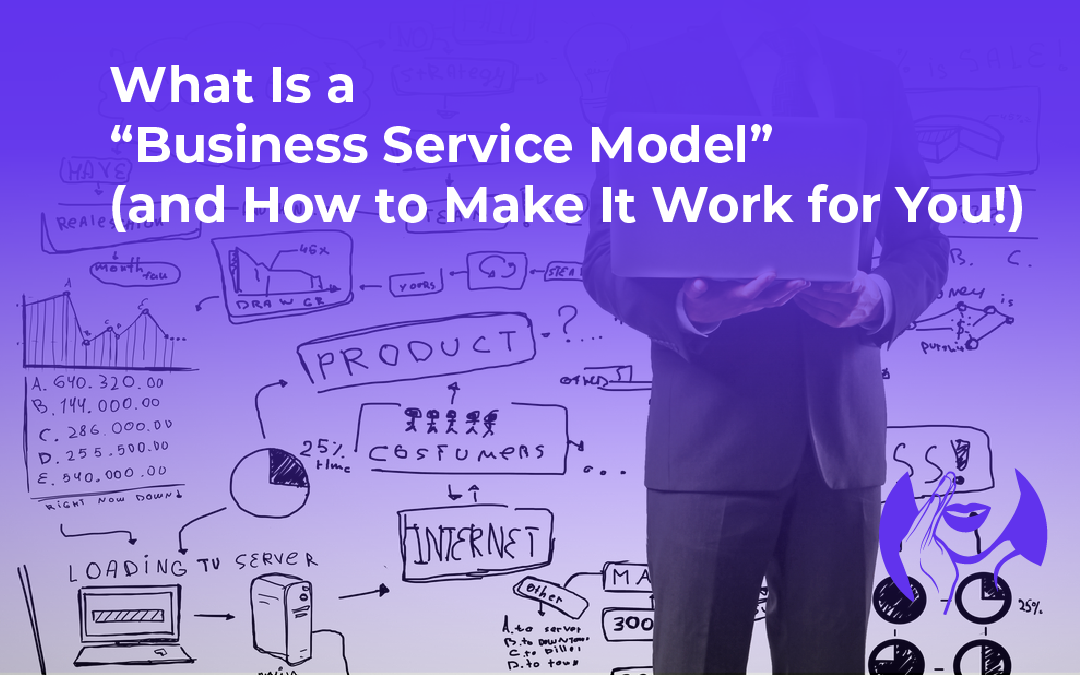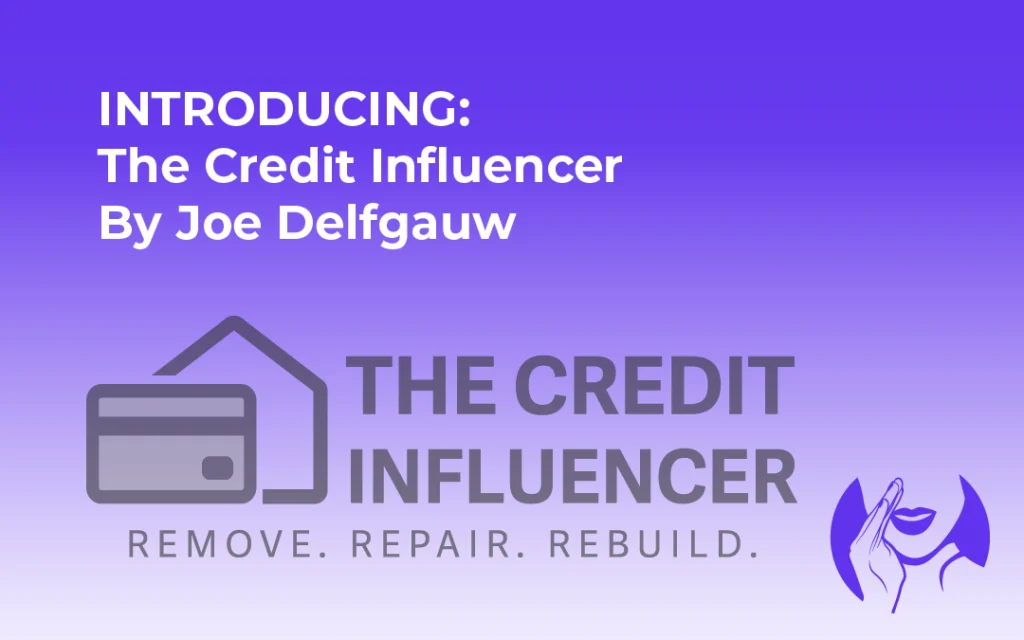Ever feel like your business services are a bit…scattered? Don’t worry, you’re not the only one. Many people feel the same way. Many service businesses struggle to connect all the dots. Business service models: They can seriously improve your situation. Your business needs a plan; it should explain how everything works together, from services to operations. Building, testing, and growing your services gets easier with a well-designed service model. You’ll see a jump in quality and your profits will rise.
Table Of Contents:

- What Exactly is a Business Service Model?
- More Than Just a Model: It’s About Modeling
- The Building Blocks of a Strong Business Service Model
- Common Types of Service Business Models
- Implementing and Refining Your Service Business Model
- Foundations That Bend, Not Break
- Why Service Design Needs a Model to Scale
- Conclusion
What Exactly is a Business Service Model?
So, what’s the big deal with a business service model? Here’s your plan to knock your service out of the park! Get ready to win. It’s how your company decides to create, try out, and then expand the design of entire services. Forget vague notions. You’ll easily pinpoint your service’s revenue model with this plan; it’s a straightforward process. You can’t win without understanding each part; they’re both vital. Use this as your business handbook. First, nail down your service, then figure out how to get paid. Creating, delivering, and profiting from goods and services is explained in detail by a company’s business model. Their profits depend entirely on this plan.
This isn’t the same as your overall business plan, which covers how the whole company runs, including things like direct sales strategies or high-level financial projections. It’s also different from super detailed operational plans, which might detail the specific hours needed for a task. Customer experience and provider efficiency are both improved by well-designed services. This is the heart of any successful business service model. The bosses are taking a look at our current processes. Then, they’ll analyze how alternative plans could boost (or hurt!) the bottom line. For example, they’ll consider how a new marketing campaign might boost sales, or if cutting costs in one area will negatively impact another. Your business plan needs to show how your services will bring in cash.
Picture this: a puzzle. small pieces create a much larger, connected picture. Small businesses and large multinational companies can both benefit from this. This is true whether you have a small team or thousands of employees. You build from the ground up, making sure each part works well before scaling up. Figuring out who your customers are and giving them what they need is easier with a well-structured plan. Smart service delivery and good cash flow are the natural results, leading to business success. Every provider should deliver consistently; that’s what a good model does.
Designing services? You’re actively involved in shaping the whole process, from start to finish. You get to decide how people use it; that’s the power you have. It promotes consistency and quality right from the start. You’re not just hoping things work; you’re designing them to work for your target audience.
More Than Just a Model: It’s About Modeling

Thinking about a business service model is really about the act of service modeling. It’s an active, ongoing process, not a static document you create once. Businesses of all sizes—from the newest ventures to long-established giants—find this incredibly useful. Smooth customer experiences happen when you thoughtfully plan every step of the service process.
Imagine using sticks and glue to build something; service models are like that structural framework. Your ideas will expand and link together with these. Think of them as the glue, holding everything together within the agreed-upon parameters. The collaboration helps everyone involved—service providers—to get on the same page. They’re all aiming for the same thing. This is where the magic happens: your ideas are converted into materials; you can then start refining and perfecting your creation.
Modeling helps you see the forest for the trees. You can see how different parts of a service connect, from the initial customer pay point to ongoing service delivery. This keeps everyone—from the people doing the work to the bosses—on the same page, working together for the company’s success.
The Building Blocks of a Strong Business Service Model
When you’re working with service modeling, you’re essentially using a set of ‘materials’. The service’s function is clearly explained by the model, which is made up of these results. They’re your helpers; the things that make the job easier. Their worth is immeasurable; they’re indispensable. Each one plays a part, and they all link to each other. They’re all things you can build with and gather people around to discuss.
Conscious choices are easier with these materials. They boost your concentration; you’ll stay on task. Successful service businesses aren’t built on magic; they’re built on a solid framework. The basic parts of this business model are explained here. You’ll see how each piece fits into a really effective system. This model works because of how all the parts work together. Think of it like a well-oiled machine: each part is important and needs to work smoothly with the others. Think of it like a puzzle; each piece is important to complete the picture. Selling houses? Building apps? Prepare to be amazed: this plan is a total breakthrough. It makes things much easier.
Vision: Your North Star
A good business service model needs a clear vision or strategy; this is what everything else anchors to. Your path to lasting customer relationships and business growth is clearly shown here. That’s the direction you’re going. But many vision statements sit on a shelf, often because they aren’t really connected to what the organization is doing day-to-day. This can be a significant oversight, as noted in many a business review.
Your service model changes that. Your marketing strategy and daily operations get a boost when you connect your long-term vision with your current tasks. The gap between wanting something and doing something? This gets rid of it. Your vision becomes a doable plan; services are aligned with your main objectives. Customers connect with a company that has a clear sense of purpose. A common understanding creates a bond of trust; it’s that straightforward.
Hypotheses: Testing Your Assumptions
Every plan has assumptions. The level of risk varies; some decisions could hurt your income or customer satisfaction. You can get to your ideal future state faster by tackling the biggest unknowns first. Hypotheses are your way of capturing and testing these assumptions about your model involves how customers will react or how efficient a process will be.
You state what you believe will happen, then you test it. Focusing is easier with this method. You can design and grow smaller parts of a whole service. John Gall, in what’s known as Gall’s Law, pointed out that working complex systems almost always grow from simple systems that worked. Effective service management isn’t about building big right away. Test your approach on a smaller scale first; this will help you grow steadily without hitting unexpected roadblocks. You’ll avoid common problems that can arise from scaling too quickly.
Life Events & Scenarios: Understanding the Context

Starting with basic principles and smaller models is smart, especially when offering service to a diverse customer base. Context is everything. Users matter. Consider their needs and the difficulties they face when using your product or service. Really put yourself in their shoes. You can learn how to best model more involved service interactions by testing simpler versions first, a method often highlighted in publications like the Harvard Business Review.
Working directly with the people who will use or deliver parts of your service is so important. Thinking about your users’ lives—the big moments and everyday stuff—helps you see things clearly and find the right customer groups. You’ll learn exactly what people need and how they’re using similar things. So, the research? Seriously useful stuff. Improved service design directly impacts how customers perceive our company; positive design leads to positive feelings. Happy customers? The impact of truly exceptional customer service is undeniable; it leads to amazing outcomes. Think about it: would *you* be happy with subpar service?
Measures: Tracking Your Impact
If you’re testing hypotheses, you need to know how you’ll measure success. What does ‘better’ look like in terms of customer satisfaction or efficiency? A business service model needs an agreed-upon way to track progress, which might include metrics on how quickly you reach potential customers or the income generated per service. Follow your progress; it’s all in the numbers. Regularly review customer payment methods and their effect on your cash flow.
This isn’t just about numbers for numbers’ sake. Grasp the significance of your service’s effects; it’s more than just a number. Think about the stories hidden in the numbers. We aim to simplify things; are we hitting the mark for our users? Business growth: Are you where you want to be? Time for a new game plan? Or are you good? Knowing what’s working and what isn’t is key to smart cash management. Accurate measurements come from using the right tools; you’ll get the answers you’re looking for. Accurate pricing depends on this data; it’s that important to our business.
Patterns: Building with Consistency
When you plan for services to grow into full solutions and operate at a large scale, perhaps even as a global business, you need patterns. They’re like handy tools you can use again and again to fix common service design problems. Service organization gets easier when you understand how services are used. Consider this: whether it’s a marketing tool or a software program, users feel more at ease when things are familiar and consistent. Trust is established; that’s the result.
You can look at service parts separately. Alternatively, you could hunt for recurring service patterns and see how they’re all linked. Patterns are everywhere once you start looking from a whole-service viewpoint, simplifying the process of providing services. Imagine this: less work, more awesome results. That’s what these tools deliver – better experiences, built faster. Clients need to trust their real estate agents. This business needs reliability to win. Ensuring good loading speed for digital touchpoints can also be considered a pattern for good customer experience.
Design Principles: Your Guiding Lights
Design principles are statements that help guide your decisions regarding the service model. They should clearly link back to your overall vision and the core business objectives. Consistent choices are easier for everyone to make when we all follow these simple rules. From start to finish, these tools back up your service decisions. Good service depends on them; they’re key at every point of customer contact.
When used well, they make it clear how the whole service should work. Think about what kind of connection you want with your customers; your service will shape those relationships and their results. Think of them as your team’s design decision-makers; they’ll point you in the right direction. Shared values allow teams to operate independently while maintaining a unified approach. This leads to better service because everyone understands what excellent service is. A required field in your design process might be to check against these principles.
Prototypes: Making Ideas Real

Finally, there’s prototyping. This is where all those materials—vision, hypotheses, patterns—come together in a tangible form. Prototypes are how you make your ideas for the service model concrete and real. They turn that ideal future state (your vision) into something you can see and touch right now, long before committing significant resources.
They are also how you put your ideas out into the world carefully. You can see how they really work in practice, unlike some product companies that might rely more on internal testing. Quick learning, easy changes, and fewer costly mistakes—that’s the power of prototyping! Making sure your service functions properly is a must before you unleash it on the world. Checking this now prevents problems down the road. It’s like a pre-flight check for a rocket launch—you wouldn’t want any surprises in space! While different from making something you can touch, testing service ideas is crucial for success.
Common Types of Service Business Models
Choosing the right business service model is crucial for success. Businesses offering different services and those with varying customer expectations will find a model that fits their needs. Your operational abilities and financial situation directly influence which service model is best for you. Consider them carefully. These are some of the usual service plans.
- The Hourly Model: This is one of the simplest service models. You charge clients based on the number of hours worked. Pros: Easy to understand and implement; direct compensation for time spent. Ideal for services where scope is hard to define upfront. Cons: Income generated can be unpredictable; it can be difficult to scale because revenue is tied directly to billable hours; clients may fixate on the hourly rate rather than value. Time tracking is a must. Many service providers start here.
- The Project Model / Flat Fee Model: You charge a fixed price for a specific project or a defined set of deliverables. The advantages are many. Predictable pricing for clients and predictable revenue for the business per project. Motivates efficiency. Cons: Risk of scope creep if not managed well; requires accurate estimation of hours needed and resources. Pricing needs a good plan. Software developers and marketing teams will find this model very useful.
- The Retainer Model: Clients pay a recurring monthly fee for access to your services or a set amount of work each month. The good stuff: Regular monthly income creates dependable client relationships that last. Ideal for ongoing services. Cons: Can be challenging to balance workloads; requires clear communication on what the retainer model – includes to avoid over-servicing. Companies choose this for consistent support like digital marketing or IT services. You often receive upfront payment for the period.
- The Subscription Model: Customers pay a recurring fee (often a monthly subscription) for continuous access to a service or productized service. The good stuff: Regular income is a big plus, and happy customers often stick around. Excellent for managing cash flow. Cons: Requires continuously providing value to prevent churn; initial customer acquisition can be costly. Often seen with Software-as-a-Service (SaaS) but adaptable to other service businesses. Pricing plans may vary based on features.
- Performance-Based Model: Fees are contingent on achieving specific, measurable results for the client. Pros: Aligns your incentives directly with client success; can command higher fees for strong performance. Cons: Defining and measuring outcomes can be complex; carries higher risk if results aren’t achieved. Clients need to see the profit in your services. This is a must.
- Value-Based Model: Pricing is based on the perceived or actual value delivered to the client, rather than time or cost. The good stuff: Potentially highest profit margins; focuses on outcomes and client benefits. Cons: Requires strong confidence in your service’s value proposition and excellent negotiation skills. Can be harder to quantify and justify initially. The client’s business is at the core of this model’s functionality; a deep understanding is essential for success.
Your service model depends on your business, who you’re selling to, and what you’re selling. Think of car companies—they make small cars, SUVs, and trucks. A diverse customer base is accessible to them; they can sell to people with different financial situations and ways of living. The best model offers clarity and fairness to both the service provider and the customer.
Implementing and Refining Your Service Business Model
Developing a business service model is one thing; successfully implementing and refining it is another. The first step is often to identify customer needs and map out current processes. You can pinpoint exactly where the service model will deliver the most value. Think of it like this: imagine trying to find the best spot to plant a tree. You’d want to find the sunniest, most fertile place, right? It’s the same with a service model. Success depends on a supportive environment; it needs that to grow. Think of it like a plant; the right conditions make all the difference. We’re building a system to boost efficiency; happy customers are the result.
Gaining buy-in from your management team and staff is crucial. Communicate the benefits clearly: how the model helps manage cash flow, improves customer experience, or supports business growth. If the new model uses different ways to manage time or clients, you’ll probably want some training. An additional consultant with expertise in service design might be helpful during this transition phase if internal resources are stretched or lack specific experience in how these models work.
Service management constantly refines the model. Regularly collect feedback from both clients and your team. Monitor key performance indicators tied to your model – whether it’s customer retention for a subscription model, project profitability for a flat fee model, or client satisfaction with an hourly model. This is part of the time learning process critical for adapting. Apply these insights; your services will thank you. Better services are within reach. Keep them working well as your company and customers change.
Foundations That Bend, Not Break
How well your business service model works really depends on the conditions inside your organization. Make sure it has what it needs to succeed; give it a fighting chance! It’s not just about having a model on paper; it’s about how it’s used and understood by everyone, from junior staff to the management team. Ongoing services are readily available thanks to our supportive team.
Whenever people talk about service models, there’s an important point to remember. Constantly communicating, explaining, and sharing the model is just as crucial as the model itself. Full participation from everyone is required for success. Customer service gets a real lift from this tool. You should easily see how it will streamline your work. Its place in the company matters. Grasp this, and victory is yours. Think of it like a new piece of software – you need to know how it fits into your daily routine to use it properly. You’ll be a more productive worker, and the company will run like clockwork – all thanks to a good understanding of this. Working together is easier when everyone’s on the same page.
So, a business service model is only as good as its ability to adapt. Organizations are always changing, with lots of moving parts. Because of this, the parts of your service model, including pricing plans or fee structure, will also need to change over time. Learning, collaboration, and shared understanding—that’s how it works. Think of it as a living thing; it should adjust to new challenges and possibilities for business expansion. Growth requires adaptation. For example, product companies might iterate features, while service businesses iterate their service models.
Why Service Design Needs a Model to Scale
You might wonder why we even need to formalize a business service model. Here’s a big reason: service design by itself doesn’t easily grow to meet large organizational needs. Just hiring more designers often isn’t the whole answer. It can be hard to find enough designers or get the budget for a large team, leading to limited scalability of design efforts.
If an organization wants to organize and manage its work using a more ‘service-first’ approach, it often needs more changes than just hiring. A service model is how you can start to embed design thinking across the company. It helps even if you only have a small number of design specialists. Distributing expertise more effectively changes how a business runs and makes money. Think of it like this: more experts, more money. Efficient project management means better use of your time and resources; a helpful model makes this possible.
The truth is, service models usually exist in some form already. But they might not be clearly written down or agreed upon. Sometimes, you might even have multiple service models working against each other without anyone realizing it. Making these models explicit helps everyone. Most businesses would get a lot from more design thinking. But because most services were never really ‘designed’ from the start, designing things at a large scale is a big challenge. Designers really make a difference. They can create, share, and align these service models. Better service and higher quality are easier to achieve now that teams have the independence and resources to make improved design choices on their own.

Conclusion
So, what’s the bottom line on the business service model? Providing services and interacting with customers becomes much clearer and more consistent for your company. This tool? No way! That’s wild. It really works. Models, context, vision, and prototypes: these are the building blocks of a strong foundation. Forget static documents. High-quality work is a result of this dynamic team effort. Service providers? They’ll find their workflows streamlined and much faster. You’ll have more free time. Everyone gets a better deal. It’s a simple as that. Whether you opt for an hourly model, retainer model, or a subscription, defining how your model works is essential.
Your customers will love your service, your teams will work more smoothly, and your finances will be easier to handle—all thanks to a well-planned business model. Marketing strategy? Customer reach? Sustainable growth? All bases are covered. Providing consistently excellent service depends on having a solid service model. Competition is fierce these days.













